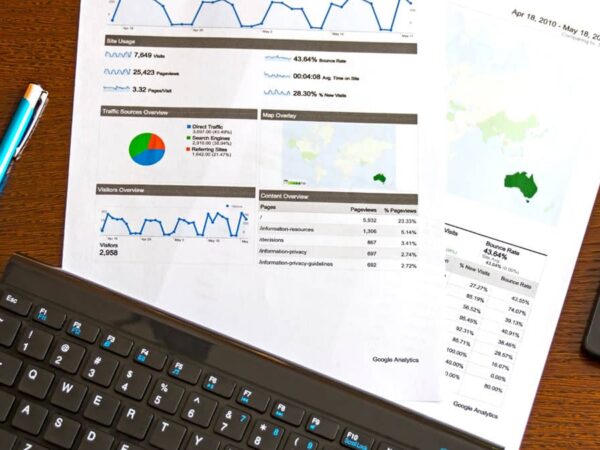Managing Inflation and Pricing Strategy for Retail Businesses
Learn about managing inflation in retail and e-commerce businesses and pricing strategies to maximize revenue without losing customers.

Many small business owners have felt squeezed by the challenges in the global economy since at least 2020. Retail businesses have seen increased costs, customers with decreased purchasing power, and significant inflation. How are small business owners, particularly in retail and e-commerce businesses, managing inflation and setting pricing strategies to maximize revenue, all without losing their customer base.
How to Manage Inflation
Inflation continues to be a major challenge small retail businesses. Costs have increased across the board and have forced many business owners to reconsider their pricing strategies. Managing inflation in retail can feel overwhelming and out of your control, but there are strategies that can help you navigate these inflationary times. There are many ways to maintain (and even grow) your profit margins, from focusing on customer satisfaction, go understanding what is causing increased expenses and implementing creative pricing strategies. There are many inflation management tactics that you can implement in your retail businesses to manage rising costs, balance customer expectations, and stay resilient in uncertain times.
The Impact of Inflation on Small Retail Businesses
Inflation always affects small retail businesses so much because they often have smaller profit margins than larger competitors and typically don’t have the weight of big corporations when it comes to negotiating with vendors or getting outside capital. Many big corporations are more able to absorb costs. Small businesses typically have less margin for increased costs without having to increase prices themselves. Over the past few years, inflation has affected everything from rent and utilities to supplies and labor. For small business retailers, increased costs can make it difficult to offer competitive pricing without compromising profitability.
For example, a customer might prefer your artisanal soap to the big box brands, but most consumers have also had to deal with reduced purchasing power due to inflation. There’s only so much more a customer is willing to spend on an artisanal soap before they have diminishing returns. Small retail businesses must remain competitive while still turning a profit.
Causes of Increased Costs:
- Rising Labor Costs: Competition for dedicated and skilled employees, along with increased regulatory costs, like works compensation insurance and minimum wage hikes, increase wages.
- Higher Supplier Prices: Vendors and suppliers across the supply chain have increased prices due to inflation, demand, and supply challenges. That makes it more expensive for small business owners to make their products and/or stock shelves.
- Shipping and Logistics: As fuel prices increase and the transportation industry is disrupted by lack of drivers or vehicle shortages, shipping becomes more expensive. That means everything from the materials you order to make your products to the cost of delivering your products to customers is more and more expensive.
- Utilities and Overheads: Fixed costs, like utilities and rent, are harder to negotiate and, in many cases, you don’t have a choice of provider. Everything from the cost of electricity to property taxes has increased over the past few years.
Small businesses must adjust to these changes in order to remain profitable. To avoid pricing themselves out of the market (increases prices to the point where customers will no longer buy their products), they need to explore new strategies for managing inflation in retail.
Building Inflation Resilience for Long-Term Success
Inflation is an inevitable part of economic cycles. Small businesses must develop strategies to manage short-term cost and build long-term resilience. To develop an inflation resilience strategy, you first need to create a business model that can withstand economic fluctuations and continue to thrive.
- Diversify: Don’t put all of your eggs in one basket. Businesses that offer a range of products or services are more adaptable when inflation hits certain areas harder than others. For instance, if the cost of raw materials spikes in one category, businesses with a variety of offerings can shift focus to less impacted areas.
- Build Supplier Relationships: Relationships are key to business success. Businesses that establish strong, long-term partnerships with suppliers get more favorable terms, such as locked-in prices or bulk purchase discounts, which can provide stability when costs elsewhere rise.
- Focus on Customer Service: By focusing on your customers, even when prices rise, your customers are more likely to remain loyal. Loyal customers are a great source of information and marketing for your business as well.
Creative Pricing Strategies for Managing Inflation
Managing inflation isn’t just about raising prices. Retailers can adopt several creative pricing strategies that allow them to manage inflation while building a loyal customer base, maintaining profitability, and paying themselves as much as their value.
1. Bundle Pricing
Grouping a few complementary items together and offering them at a slight discount can encourage larger purchases, making the price increase less noticeable. Bundle pricing allows businesses to increase average order value without explicitly increasing prices on individual products.
2. Tiered Pricing
Offer tiered pricing based on product features or levels of service. This creates options for different customer’s with different budgets. By offering premium and economy versions of products or services, retailers can maintain affordability for price-sensitive customers while maximizing revenue from those willing to pay for more value or higher quality.
3. Dynamic Pricing
Dynamic pricing adjusts prices in response to supply, demand, and market conditions. This tactic is often used in e-commerce and by major retailers, but small businesses can also implement it on a smaller scale. You many need to invest in tech tools to implement this strategy but it could be worth it.
4. Value Pricing
Include not just the cost to make the product and the cost of your time, but also the true value of your product in the market place. Your steak salad is worth more than just the raw ingredients, because of the time, skill, effort, and creativity that you put into the final product
Shipping Costs: How to Charge for Shipping Without Driving Customers Away
Shipping costs are a major concern for small businesses, and the growth of e-commerce brands of all sizes has brought the issue to the forefront of the minds of businesses and consumers alike. But, you don’t want to charge too much for shipping because you don’t want to risk losing a large amount of your customer base. Absorbing the full cost of shipping isn’t an option either if you are going to maintain profitability. Here are some strategies to balance this delicate issue:
- Free Shipping Thresholds: One of the most effective e-commerce pricing strategies is to offer free shipping above a certain order value. This encourages larger purchases and helps offset the shipping costs.
- Flat-Rate Shipping: Simplifying shipping with a flat rate helps customers anticipate costs and makes shipping fees seem more predictable and reasonable. To effectively implement flat-rate shipping, you need to clearly understand your average box size and weight, so you know how much to charge each customer.
- Promotional Shipping: Offer free or reduced shipping for products that you have on a promotion or a discount. It’s a great way to experiment with shipping pricing models in a lower risk way.
Balancing Price Increases with Customer Retention
Increasing prices can be tricky. Business owners often worry about losing customers, especially around products especially sensitive to changes. Here are a few techniques to help you adjust prices without alienating loyal customers:
- Customer Communications: One of the best customer retention strategies is transparency. Be open with customers about why prices are rising. Explain that inflation, supplier costs, or shipping rates are affecting the price, and that you’re still committed to offering the best value. You might lose some customers along the way, but the customers that remain are more loyal to you and are keeping you profitable in a way that ones who you lost weren’t.
- Gradual Increases: Instead of making significant price jumps, small incremental increases over time can be less shocking to customers. By spreading out the impact, you give customers time to adjust.
- Loyalty Rewards: Offering loyalty programs or discounts for regular customers can soften the blow of price increases. Special offers for repeat business make customers feel valued even when you have to increase prices.
Reducing Operational Costs to Offset Inflation
Managing inflation isn’t just about revenue; it’s also about reducing costs wherever possible. The number one thing you can do to reduce expenses is know your data. Regularly collect, review, and summarize your costs, so you know exactly how much you are spending in each category and where you can reduce costs.
Building Long-Term Partnerships with Shipping Carriers
Shipping costs are one of the largest expenses for small businesses, particularly in e-commerce. Developing a long-term partnership with a shipping carrier like FedEx can provide numerous benefits:
- Negotiating Better Rates: Over time, businesses can often negotiate lower rates based on consistent volume. Many carriers offer discounts for businesses that ship regularly or in bulk. Often, the more business you do with a carrier, the better your rates are.
- Improved Customer Experience: Reliable shipping helps retain customers. If you are able to tell a customer exactly when their order will arrive, you are likely to reduce complaints and increase repeat business.
A strong partnership not only reduces costs but also improves service reliability. FedEx also offers other support that can contribute to small business success, like the FedEx Packaging Lab.
Advice for Entrepreneurs on Managing Inflation
One of the best pieces of advice for small business owners facing rising costs is to stay flexible and adapt quickly. Inflation management requires business owners to continuously monitor their expenses, adjust their pricing tactics, and find ways to reduce operational costs without compromising on quality. Stay informed and proactive so you can navigate inflation and even turn challenges into opportunities.
Here are some final retail business tips:
- Keep a close eye on industry trends and competitor pricing.
- Focus on customer retention strategies, such as loyalty programs and special discounts.
- Use technology to streamline operations and reduce costs.
- Stay transparent with customers about price increases, and reward loyalty where you can.
- Have back-up vendors that you can rely on if your primary vendor faces supply chain challenges or price increases.
The Role of Small Business Advisors
Small business advisors can also be invaluable in helping you strategize and implement these approaches. Inflation may be an ongoing challenge, but with the right strategies, it is possible to not only survive but thrive.
We are here to help! If you are feeling overwhelmed by inflation and pricing decisions, set up an advising session with one of our certified business coaches to craft an pricing strategy for your business. These professionals can help you assess your pricing strategies, identify cost-saving opportunities, and develop a long-term plan for growth.
Key Takeaways: Pricing Strategy and Inflation Management
For small retail businesses, managing inflation requires balancing rising costs with maintaining profitability and customer loyalty. Here’s the final piece of advice:
- Plan ahead: Don’t wait for inflation to force you into action. Proactively monitor costs and adjust your pricing strategy as needed.
- Remain customer-focused: Your customers are the base of business success. Keep them informed, reward their loyalty, and be transparent when you need to adjust prices.
- Seek expert help: Don’t hesitate to reach out to small business advisors or peers for guidance on navigating these challenges.
In challenging economic times, resilience is key. By implementing an intentional pricing strategy, managing operational costs, and focusing on customer loyalty, small businesses can not only survive but thrive in the face of inflation.








